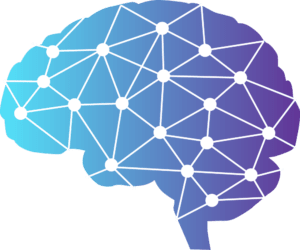Imagine two identical female patients with chronic low back pain walked into your office.
Both women have suffered from low back pain for over 5 years and both tell you that their current pain intensity is 8/10, with 10 being the worst back pain imaginable!
The first woman calmly describes her frustrating journey with pain.
The second woman tells you about her pain through clenched teeth as she awkwardly maneuvers her body to find a comfortable position, which she never finds.
Which patient will receive better pain care?
Pain is a subjective experience.
We depend on our patients’ reports of pain when we assess and treat them because their pain is a private experience. It should come as no surprise that patients who are able to express their pain more clearly and effectively may receive better treatment because their providers have more information to work with. Obvious pain behaviors can also convince a practitioner that a patient’s pain is “real” and requires professional attention.

The social dimension of the biopsychosocial model of pain care receives far less attention than the biological and psychological dimensions. As healthcare practitioners, we know that our interactions with patients are critical in helping them in their personal journeys to healing their pain. Despite the field’s growing awareness of the importance of the patient-practitioner relationship, we are still learning why these social interactions contribute to our patients’ success stories.
Evolutionary Value of Social Networks
From an evolutionary viewpoint, we are social animals. In many species, social interactions are important because there is “safety in numbers.” Social interactions give us a sense of safety and tell us about threats in the environment. That means that safety and danger are big parts of the way we talk about pain to others. Pain communication uses verbal and nonverbal social “cues” that are advantageous in (at least) 3 ways.

Expressing pain helps to:
-
- Escape & protect against the source of pain
- Earn others about the potential threat; and
- Get help from others, which makes it rewarding
Message Received? How We Communicate Pain
Every person has a unique viewpoint and a unique history that shapes how they experience pain. This worldview is related to personality, past experiences, bias toward positive or negative thinking, emotional reactivity, and even family-specific and culture-specific expectations of what it means to feel pain. Our words and actions are personalized expressions of pain that make a private experience accessible to others. We communicate pain in three ways:
1. Facial Expressions
Nonverbal cues like facial expressions and pain behaviors are near-universal ways to that people express pain. Research shows that people from every culture can recognize facial expressions for emotions like happiness, anger, sadness, disgust, and fear, as well as pain. Facial expressions can be involuntary or deliberate, and because they change from moment to moment, they give you a good idea of how a person’s pain experience changes over time.
2. Pain Behaviors
When a person is in pain, they may grimace or show “paraverbal” behavior like grunting, gasping, or sighing. Some people use their whole bodies to tell you they are in pain with behaviors like fist clenching, neck arching, knee bouncing, or repeatedly rocking the head or torso. When pain has passed, you are more likely to see guarding behavior to protect the body from more damage. Rubbing the painful area is also common, and research shows that a small subset of C fibers neurons that respond to pleasant touch may also be a source of natural analgesia. By expressing pain in so many ways, we are making sure that others who are around us are aware of the intensity and location of our pain.

Although we are always on the lookout for patients who may be exaggerating their pain, it’s important to remember that people with chronic pain rely on these behaviors to tell us they are suffering and need help. As stated in the title of an excellent paper on the topic, “It is hard work behaving as a credible patient.”
3. Verbal Descriptions
The way we talk about our pain is so important in clinical pain care. The language we use relates to pain intensity, body location, change over time, the amount of emotional suffering, and potentially the physical factors that relate to pain. For instance, burning and electric shock-like pain are common in people with neuropathic pain conditions.
The importance of the words we use to describe pain to others inspired Ronald Melzack and Patrick Wall to create the McGill Pain Inventory, which contains a list of words that describe different pain experiences. Based on their interactions with many types of chronic pain patients, they divided pain-related words into 3 categories:
-
- Sensory words (e.g., throbbing, burning)
- Affective words (e.g., punishing, cruel)
- Evaluation words (a subset of Affective words, e.g., discomforting, unbearable)
When pain words are combined with facial expressions and behavior, we are able to access a more complex picture of their physical and emotional suffering (1).
Pain Empathy is Hardwired
If pain is a type of social interaction, how is the experience shared? Neuroscience research shows us that one way the pain is shared is through the rapid synchronization of brain activity. In one of the most replicated experiments in pain imaging research, simply observing someone else in pain will activate a network of brain regions that are active when someone is actually in physical pain. This means that if you compare the brain scans of a person experiencing pain and another person observing them, they will look identical. The anterior insula and anterior cingulate cortex seem to play a special role in pain empathy. Like any social skill, empathy can even be improved with training, and this training strengthens the brain activity in the anterior cingulate and anterior insula. Equally incredible–watching someone get pain relief from placebo treatment reduces the activation of this brain network in the observer’s brain. Pain empathy is sensitive to both increased and decreased pain (2). This degree of attunement is the human version of synchronized fireflies.

Social Basis of Safety
So far, the social aspect of pain is based on the expectation that others will help out if we are in pain. But what if our life experiences run counter to this expectation? This issue is at the core of Bowlby’s Attachment Theory, which suggests that our social expectations of emotional support are formed during early childhood. “Attachment” refers to the quality of the relationship between an infant and their caregiver (usually, the mom). When a mother is attentive, emotionally responsive, and accessible, she becomes a “secure base” representing protection and comfort. We carry these expectations throughout our lives as an internalized emotional template, or attachment style, that biases how we interpret social information and influences our emotional needs in romantic relationships, like a personality trait. Ultimately, attachment style reflects our learned responses to threat, and this is why it plays a role in pain (3).
Attachment styles are identified when you take a child’s mother away and watch the kid’s response. There are generally 3 ways this can turn out:
-
- A securely attached child cries when the mother leaves but can self-soothe because they know she will return and that she will protect them. They actively explore their surroundings while the mother is gone, and are happy to see her when she returns. As an adult, the secure style makes a person as comfortable connecting with others as they are with being alone. They know what healthy relationships look like and handle interpersonal conflict in a balanced way.
- An anxiously attached child is very distressed when the mother leaves, doesn’t explore the environment while she’s gone, and is ambivalent when she returns. Not surprisingly, adults with this attachment style fear abandonment and prefer the comfort of being in a relationship. They seek a partner’s reassurance, and communication is important.
- An avoidantly attached child doesn’t react much when the mother leaves, doesn’t explore the environment while she’s gone, and avoids or even stonewalls her when she gets back. In adulthood, these people are the “Commitment Phobes” who may have difficulties trusting others. They are more likely to incorporate interpersonal distance into their lives (e.g., long distance, long work hours) to maintain space for themselves, apart from their partners.
My favorite illustration of the importance of attachment is an old and super controversial psychology experiment by Harry Harlow. Harlow paired cute baby monkeys with various fake, “surrogate” mothers made of wire. Some wire mothers were covered in soft cloth, and others weren’t. When given the choice between the two, baby monkeys preferred to snuggle the cloth mothers, even if they had to take periodic breaks to visit the wire-only mother for food. Monkeys with cloth mothers (and not wire-only mothers) were less fearful of invaders that entered their home cages, like noisy teddy bears. Having a cloth mother even gave some baby monkeys the courage to approach the annoying teddy bear, as if to say, “Seriously. Shut up.” In stark contrast, the baby monkeys who were stuck with wire mothers had chronic diarrhea (Harlow gracefully interpreted this symptom as stress). Harlow reasoned that the cloth mother is a “secure base” because she represented predictable and reliable comfort. Ethical issues aside (and that’s asking a lot here), Harlow essentially demonstrated that maternal comfort was needed for monkeys to become securely attached.
Social Analgesic Effect #1: Simple Distraction
Distraction is underappreciated. We know from research that attention to pain makes the pain worse, and distraction reduces this pain. But we often forget that distraction from one thing means that we are paying attention to something else. When you really immerse yourself in a friend’s company, the attention you are pouring into that interaction is attention that is NOT directed at pain.
Remember that all distraction is not equally effective at reducing pain. Research shows that chronic pain patients can have difficulties with attention and working memory, so distraction with complex mental tasks based on memory recall or math problems may not be as effective as mindfulness meditation, for example.
Social Analgesic #2: Bosom Buddies
The effectiveness of pain communication depends on who is listening. People are less sensitive to pain when they get clear expressions of support from people they trust. Support can be something as simple as a reassuring hand squeeze, or it can be a friend saying, “Just so you know, I am here for you. I know you are struggling, and I’m ready to help you.” This type of frank social support is a safety signal for a person who struggles with chronic pain. The threat of pain isn’t as scary when you know you aren’t alone.

Some social interactions may do more harm than good. For example, social support that focuses on the threatening features of pain reduces pain tolerance, but social support that focuses on the pain itself increases tolerance for intense pain. Another quirky thing about social interactions of chronic pain patients is that greater spousal/partner solicitousness (not a friend, family, or doctor solicitousness) is associated with higher pain levels and more disability (4). These counterintuitive findings are partially explained by the way most of these studies define solicitousness: paying attention to pain behaviors and offering to help with household tasks and responsibilities (which can be offered with a smile or a sneer of contempt). Patients in these studies are rarely asked about other types of solicitousness, like emotional support and encouragement for independence (5).
Social Analgesic #3: A Second Pair of Eyes
We use other people’s presence and input to gather information about whether we should be more/less freaked out about what we’re experiencing. Attachment theory, if you recall, tells us why: from a very early age, we rely on others to feel safe. Research shows that people with anxious or avoidant attachment styles are more likely to show:
-
- Greater sensitivity to environmental information about threats, like pain;
- Stronger reliance on other people’s anxiety levels to estimate the level of threat; and
- An interpretation bias that relies on social feedback.
Research shows that people with anxious or avoidant attachment styles rely more heavily on social cues that convey threat, and the increased attention to threat may enhance their pain sensitivity. For example, women with anxious or avoidant attachment styles report more pain when they have anxiously attached romantic partners. Receiving reassurance, via empathic responses from others, may protect against this effect. In contrast, people with secure attachment styles seem to be more resilient to contextual factors that could escalate pain. This resilience can even benefit the pain experience of their anxiously attached friends! This effect is stronger for familiar people (friends, partners, family, etc), so it is unclear whether supportive provider interactions could be protective against pain amplification, as well (5).
Social Analgesic Effect #4: A Friend within Arm’s Reach
A friend’s physical proximity influences how effective they are as a social analgesic. Greater reductions in pain are reported when a person providing social support is within arm’s reach (5). Studies show that there are 3 instinctual reasons why proximity is important:
-
- It’s easier to judge the intentions of someone who is beside you than someone who is across the street. Their predictable behavior tells you that they are safe to be around, and in a sense, uncertainty itself is a threat that can enhance pain.
- They can actually help you!
- We allow people near us if we know they are safe. Intimate partners give us the strongest feelings of safety and their physical presence reduces pain.
Social Analgesic Effect #5: Synchronizing
We have all experienced those moments of satisfaction when a patient’s pain fully resolves. It feels like magic. When that happens, I feel as if there was something about the way I synchronized with the patient that was the secret ingredient to success. As if we were the ingredient to their success.
 The increasing interest in harnessing the therapeutic alliance to help patients heal their pain is an exciting development of the biopsychosocial model. However, no one can really agree on how this would work. An obvious hypothesis is that provider communication is acting as a conditioned placebo response because patients learn to expect pain relief from their interactions with healthcare practitioners. As much as I dislike being referred to as a placebo, I can appreciate the idea. However, research on this topic is a mess: only weak effect sizes are reported for an analgesic effect of healthcare communication. This isn’t surprising because no two researchers have asked the question in the same way, with the same methods (6). One consistent finding, however: Patients need to be aware of placebo manipulations for them to work. This means that strong communication with patients is needed so that they are aware of the therapeutic potential of their provider relationship.
The increasing interest in harnessing the therapeutic alliance to help patients heal their pain is an exciting development of the biopsychosocial model. However, no one can really agree on how this would work. An obvious hypothesis is that provider communication is acting as a conditioned placebo response because patients learn to expect pain relief from their interactions with healthcare practitioners. As much as I dislike being referred to as a placebo, I can appreciate the idea. However, research on this topic is a mess: only weak effect sizes are reported for an analgesic effect of healthcare communication. This isn’t surprising because no two researchers have asked the question in the same way, with the same methods (6). One consistent finding, however: Patients need to be aware of placebo manipulations for them to work. This means that strong communication with patients is needed so that they are aware of the therapeutic potential of their provider relationship.
Ideal Recipe for Supporting Someone in Pain
Whether you are interacting with a patient or a friend, there are simple things you can do to make them feel safe and supported.
-
-
-
-
-
- Be expressive! Help them understand why their journey to healing their pain is important to you.
- Be dependable and be present. These are unambiguous signs that you care.
- Ask them what makes them feel supported? Kind words may be all it takes. Others need physical affection, even a friendly pat on the shoulder, to establish trust.
- If they are on the anxious side, be generous by reassuring them a few times.
- Unless you are intentionally doing an emotional intervention, try not to focus on the fear or anxiety related to pain.
-
-
-
-
Have I left anything out? What do you do to make a patient feel comfortable and safe?



